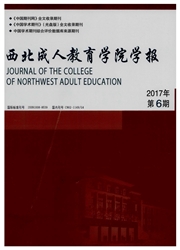

 中文摘要:
中文摘要:
为解决常规电动修复方法对Cr污染土壤Cr(T)(总Cr)去除效率低的问题,提出了酸化预处理-电动强化修复技术.以国内某化工厂铬渣堆放场地Cr污染土壤为研究对象,通过改变土壤酸化条件,分析乙酸和柠檬酸的酸化时间、酸浓度(以c计)对电动修复Cr污染土壤中Cr去除率的影响,并对土壤中Cr的形态进行分析.结果表明:①酸化预处理-电动强化修复技术可以显著提高Cr污染土壤中Cr的去除率,其中0.9 mol/L柠檬酸酸化5 d组Cr(T)和Cr(Ⅵ)的去除率由对照组的6.23%、19.01%分别升至26.97%、77.66%.②土壤酸化可以将部分Cr由碳酸盐结合态向水溶态转化,进而提高Cr去除率;在适宜的酸浓度范围内,酸浓度越高,土壤释放的Cr越多,Cr去除效果就越好.③与乙酸组相比,柠檬酸组Cr的去除率较高,因为柠檬酸本身也是一种络合剂,在酸化作用释放碳酸盐结合态Cr的基础上,柠檬酸能与Cr发生络合作用,进一步提升了Cr的去除率.电动修复过程中迁移出土壤的Cr主要以醋酸可提取态、可还原提取态和可氧化提取态为主,残留Cr的生物可利用性降低.
 英文摘要:
英文摘要:
Preacidification electrokinetic remediation was proposed to solve the problem of low total chromium removal efficiency using the conventional electrokinetic method for chromium-contaminated soil. Experiments were conducted on chromium residue-contaminated soils collected from a chemical factory. In the present study,the effects of acidification time,concentrations of acetic acid and citric acid on removal of chromium from soils were studied by changing the acidification pretreatment conditions,and then speciation analysis of the chromium was conducted to study the regularity of Cr in different speciations. The results showed that the electrokinetic remediation removal efficiency of chromium from the contaminated soil was significantly enhanced with acidizing pretreatment. The total chromium( Cr( T)) and hexavalent chromium( Cr( Ⅵ)) removal rates of the group acidized by citric acid( 0. 9 mol/L) for five days were up to26. 97% and 77. 66%,respectively,while the Cr( T) and Cr( Ⅵ) removal rates of the group without acidification were 6. 23% and19. 01%,respectively. The removal ratio of chromium depended on acid concentration and acid type. In addition,the part of chromium with carbonate-combined state was converted into water-soluble state through acidification to improve the removal rate. Within the appropriate concentration range,the higher concentration of acid,the more chromium release there was. The chromium removal ratios of the citric acid acidification groups were higher than those of the acetic acid,mainly because citric acid is a complexing agent, which is able to bind with the carbonate-combined chromium released by acidification and then enhance thechromium removal efficiency. The major speciations of chromium removed from soils by acidification-electrokinetics remediation were acidsoluble speciation,revivification speciation and oxidation speciation,and the residual chromium biological availability was reduced.
 同期刊论文项目
同期刊论文项目
 同项目期刊论文
同项目期刊论文
 期刊信息
期刊信息
